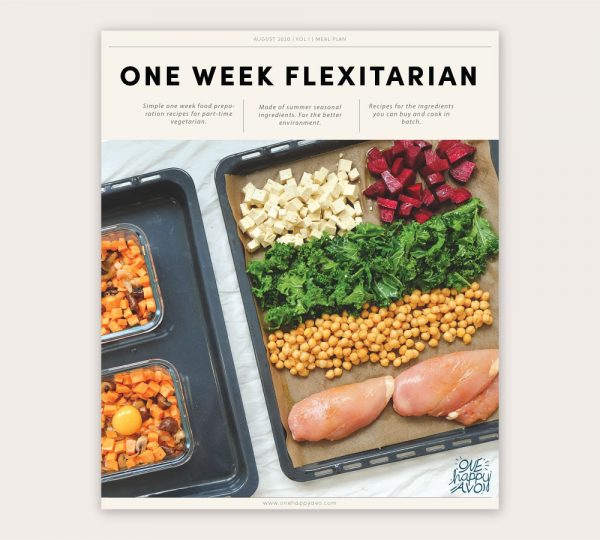Eating less meat is not so difficult anymore when there are so many meat substitutes selling in the supermarket these days. From sausage to bacon, you can almost find anything meatless.

Meat substitutes are relatively new. Despite the natural plant protein such as beans, legumes and even tofu, meatless sausage is something we didn’t quite see in the past years. Now even people who are not vegan or vegetarian are eating meat alternatives along with the real meat.
More companies in the food industry are putting meat alternatives product alongside the traditional meat based products. Famous meat-based fastfood chain like KFC has also tried to break the ice with their new Beyond Fried chicken in the US. While some people can see it as fake and highly artificial food, more and more people are turning to plant-based meat for far more reasons.
Meat alternatives are definitely on the rise. There are a wide range of so call “vegan meat” from the least to the most processed. Here are eight common questions that can help you understand more about artificial meats.
1. What are vegan meat made off?
There are many types of plant-based meat substitutes from all natural to lab-produced meat. The traditional ones are the most natural ones, these include tofu, tempeh, seitan, beans, chickpeas and jackfruits. And there are the commercial meat alternative products that are most probably looking just like product from actual meat as it is designed to be.
The traditional meat substitute are definitely less processed since most of them are invented before the use of artificial food additives. The main ingredients for the traditional plant-based meat are soy beans, wheat gluten, legumes and nuts.
Meanwhile, the more advance meat alternatives that imitate the real meat are more processed and contains more complex ingredients. Most of these products are based on protein isolates from peas, soy, beans and rice which can only be industrially processed. Wheat gluten, vegetable oil, potato starch, spices, condiments and additives such as fortified minerals and vitamins are being added to create meat-like texture and taste. Beetroot juice extraction is used to imitate the color of beef.

2. Is it healthier than eating actual meat?
Meat alternatives have a long history, and some believe to be very healthy. Depending on how that particular meat alternative is made, the more processed ones are obviously as bad as any processed meat.
Taking tofu for example, it has been consumed since the early times and has many researches proven to be beneficial for our body. In contrast, some highly artificial meat substitutes can contain extremely high amount of sodium and additives which are not so good for your health.
Cholesterol is another factor to be considered when it comes to eating actual meat. Since meat alternative comes from plants, it doesn’t contain any cholesterol. However, some processed meat alternatives do contain high amount saturated fats than the actual meat.
Eating meat alternatives can also reduces risk of foodborne zoonotic diseases. While eating good quality meat can provide you wit necessarily nutrients, some plant-based protein can also be a good source of fibre and probiotic that are not present in meat.
Overall: If you choose the plant-based meat that are less processed it is definitely great for your health, as equal as choosing a high-quality meat. So make sure to flip the package and take a look at the ingredient label. The balance between eating good quality meat and healthy plant-based meat is the best way to go.
3. How does something plant-based look so much like meat?
First, let’s start with the texture. As we know the texture of peas is nothing like beef. However, after a lot of studies being done, researchers have successfully isolate just protein out of plant like soy beans, legumes and peas. These isolated protein mixed with water give the fiber-like texture that is very close to meat texture.
The appearance that looks similar both before and after cooking comes from the either beetroot juice extraction or leghemoglobin which is extracted from legume plant roots for a beef products imitation. Even when cooking these plant-based beef burgers, it can give the meat juice like the actual beef. The marble look on the meat comes from coconut fat also moisten the plant protein. For poultry meat imitation, some plant protein is already white in color as it is not hard to make them look a like.
4. Is meat alternative actually better for the environment?
With no doubt, most of the meat alternatives are much better for the environment than livestock products. As the livestock industry has overly exhausted the environment, increasing meat alternative consumption can bring back the balance.
Environmental concern is one of the major reasons why people switch from eating real meat to eating meat alternatives. It is not just the reduction of carbon footprint, and it is also easier to manage in terms of sustainability.
According to Beyond Burger, their burger produces 90% lesser greenhouse gas and use 46% lesser energy than the similar product made from beef within the US. However, as good as this sound, further studies on production and distribution still need to be done.
Meanwhile, more traditional meat alternative products such as tofu, tempeh and jackfruit required very little industrial process that it actually consider being very ecological. Although, these traditional products might not at all imitate the real meat, it is consider a win when it comes to sustainability and environmental concerns.
5. Is it good for the body in along run?
This depends a lot from person to person. Traditional soy based meat substitutes can be very good in a long run for some people, but these products do have some drawback. Soy products tense to have estrogenic properties and might not be suitable for some people with hormonal issues.
Veganism and vegetarianism in general are believe to be healthier than those who eat meat on regular basis. Yet there are not particular research on having meat alternative products in association within a long run. This also includes meat alternatives that are highly processed. Some can be as bad as eating fast food all the time.
Eating these products in balance with other kinds of food believes to be the safest way for now. Make sure to not over consuming on one particular food group or products is the best in a long run.

6. What are the drawbacks for meat alternatives?
One major concerns when cutting down meat or substitute meat with plant is the lack of vitamins and mineral that can be found only in the meat products. Vitamin B12, iron and zinc are the main critical nutrient when it comes to plant-based meat. However, in the industrialized meat alternatives, these nutrients are usually being added to the product. Yet, it is relatively processed.
Allergy is another thing to consider in meat alternatives. The major allergy drawbacks are soy, gluten, nuts and wheat. Since most of the prepackaged meat alternatives often put loads of ingredients to make them taste amazing, it is important to check for the ingredient labels.
Some meat alternative products can contain high sodium and fat content as it might not be so different from eating fast food at all. Even with tofu or tempeh, the taste is quite bland, so it might take a bit more condiments to bring it to life. This is not to say that meat products are lower in sodium and fat, but consuming in moderation is the key.
Meat alternatives can also be quite expensive too. Not to the point where it is unaffordable but many of meat alternatives can have a bit higher price point than the actual meat.
7. Does it taste good?
Taste is one of the most important selling point of the modern meat alternatives. Many people love the taste of meat alternatives, some even found it even better than the actual same product made from real meat. Depending on the brand, some can really taste like mash pea and some can taste almost like real chicken nugget. It is quite hard to pin a point on which brand is the best, but take it as an opportunity to explore the landscape of meat alternatives.
For some traditional meat alternatives like tofu, I would suggest looking up the recipes as they don’t imitate the taste of meat. It can be very healthy but not as tasty as the modern meat alternatives.
8. Will I get enough protein from eating only meat alternative products?
Different protein amount varies on the person and activities. But let say in general, yes, you can have enough protein from meat alternatives. Most modern meat alternative contains a complete protein as equivalent to the meat products in the same categories.
Even if you do not use modern meat alternatives and eat just legumes and bean, you can still meet the daily protein intake with. However, the qualities of protein are different as the protein in beans and legumes are incomplete (not having all 9 amino acids) and often need to be pared with some other grains.
Tofu is another great protein alternative. With low calories than meat and dairy products, tofu can be consumed in a slightly larger volume to get the equal amount of protein, yet still having lower calories.
Hope this article covers most of what is stopping you from trying meat alternatives. After all, these meat substitutes aims to benefit both our health and the environment. There are also many options for you to choose. Both the environment and people health are suffering from consuming too much conventional meat anyway, so why not giving meat alternative a try 🙂

